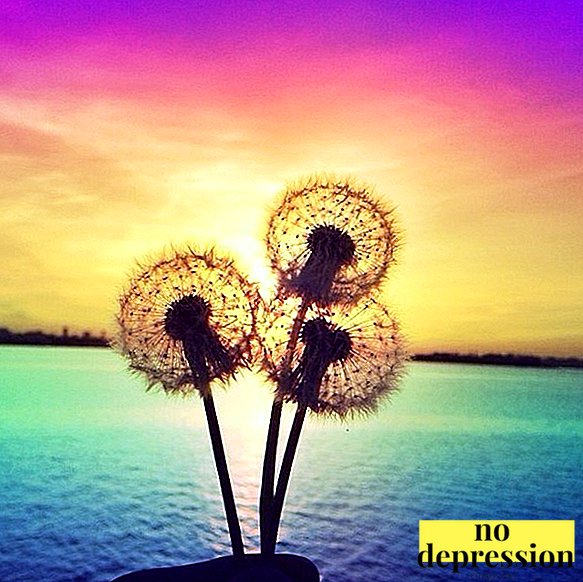Consciousness is higher mental functionwhich is inherent only to man.
With it, the individual plans his life, evaluates the surrounding reality, gets knowledge. Consciousness has a certain structure and functions.
Concept definition

Psychologists and philosophers identify two aspects of the psyche that make a person a man.
it consciousness and self-awareness. Consciousness is understood as the highest degree of reflection of reality and life management.
With the help of consciousness, a person controls his mental functions, forms a model of the external world, knows and evaluates everything that happens to him and around him.
The most important element of consciousness is self-awareness.. By this is meant the understanding by an individual of himself as an object of the world, the formation of the image of his “I”, of ideas about himself.
Consciousness and self-consciousness are the functions that humanity acquired and developed in itself in the process of evolutionary development.
The first signs appear even in infancy, when the child distinguishes sensations from various objects and processes that occur to him.
Be clear about yourself the baby starts at 2-3 years old, at seven years old children get self-esteem.
The most rapid and rapid development of consciousness and self-awareness runs in adolescencewhen a person is actively looking for himself, his style, determines his place in life. In the same period moral principles are formed.

So in the mind The following forms are distinguished:
- self-awareness;
- Reason - the ratio of themselves and their concepts to the world;
- the reason is the thinking mind;
- spirituality is the highest degree of consciousness.
Exists many theories about consciousness. For example, Freud believed that every event and experience of a person is determined by the conscious and unconscious.
In the area of the unconscious is the sexual and aggressive side of the personality, as well as those events that the individual deliberately ousted from his memory and mind. When the unconscious tries to “break through” into consciousness, a person has a feeling of anxiety.
From the point of view of idealism, consciousness is always primary. The world cannot exist outside of its perception by man.
Materialism considers consciousness a property of highly organized matter. It not only reflects the existing reality, but also controls it.
Functionalism defines consciousness as a function, that is, a person, being in a conscious state, performs certain functions. On this built Artificial Intelligence.
Structure

What is included in the structure of consciousness? In psychology, isolated important structural components of consciousness:
- being;
- reflection;
- self-awareness.
It performs the following functions:
- Reflection. This includes the ability of an individual to cognize, perceive, memorize and store information.
- Reflection. This is an opportunity to realize oneself as an object of the world, to understand one’s “I”.
- Transformation. A person is able to set goals and achieve them.
- Creative. With the help of the mind, the personality manifests imagination and creativity.
- Evaluation. This includes emotions.
- Communication. A person conveys his knowledge with the help of certain signs. That is, consciousness cannot exist without communication.
- Time formation. This is a holistic picture of the world, containing memories of the past, an understanding of the present and the future.
This property is the main difference between humans and animals.
According to modern psychology, The structure of consciousness contains the following components:
- Intellectual. Combine ability, knowledge, skill, with which the individual solves mental problems. Knowledge is the basis of intelligence. But cultural values and traditions that are created by man are also important. Abilities include: memory, thinking, perception, attentiveness, observation, the ability to reproduce information, switch and concentrate attention, etc.
- Motivational. The source of motivation is the needs of the individual.
Motivation - the motivation that determines the focus of the behavior of the individual.
- Emotional. This is a person's attitude to what is happening with him. This component consists of feelings, moods, experiences, stress, etc.
- Strong-willed. A person is able to act and control his behavior in spite of difficulties and his desires.
- Self-conscious. It reflects the individual's own "I". Thanks to this component, a person is capable of self-knowledge and self-education.

In terms of scale, consciousness is personal and social. Personal includes all the above structural components.
- Public - this is the totality of the consciousness of society and other individuals, perceived through the prism of their intellect. Formation of the public occurs in several stages:
- A person acquires an individual experience for which impact social environment and groupin which it is located.
- Then join state norms, culture, ethnicity, their traditions and laws.
- Also impact on personality: religion, myths, ancestral experiences, prejudices, and other experiences gained over centuries of human life.

Based on this, the following can be distinguished public forms:
- religious
- moral and ethical;
- legal;
- political;
- economic.
Thus, religion, laws, economics, political system and moral norms adopted by a particular society influence the public consciousness.
Stages and functions of self-awareness
Self-awareness - this is a person’s perception of himself, an understanding of his difference from others, an awareness of his needs, emotions, feelings, experiences.
Self-awareness performs the following functions:
- Difference of oneself from others, acceptance of one’s individuality.
- Preservation of the constancy of actions and behavior, responsibility for their actions.
- Motivation for certain activities.
- Forming a model of relationships with others.
- The ability to develop personality traits, control emotions, feelings.

In its development of self-consciousness passes the following steps:
- Natural. The child learns to distinguish and perceive the sensations and effects of external factors on him with the help of sensorimotor intelligence.
- Social. Man perceives himself, evaluates and compares with others.
At this stage, self-esteem and will arise.
- Personal. The individual understands the reasons for his actions, assesses the possibilities for further development.
In this way, the psychological structure of self-consciousness consists of the following components:
- self-knowledge;
- self control and self regulation;
- self-esteem;
- self-acceptance;
- self esteem.
Stages of development:
- Awareness of identity, self-isolation. Develops to 12 months of life of the baby.
- Understanding yourself as a subject of society and activities. Manifested in 2-3 years.
- The adoption of individual mental characteristics. Formed in adolescents.
- Formation of moral and ethical principles. Begins to develop in adolescence.

Freud's theory briefly
Sigmund Freud became the founder of the theory of the unconscious. According to him, only a very small part of the human psyche is conscious, the rest remains beyond consciousness.
The unconscious is the sexual sphere, the aggressive side of the personality, the feeling of hunger. Man can not affect them.
Although the line between conscious and unconscious very conditional. Some moments can go into the unconscious and return under certain circumstances.
The unconscious is formed in the subcortical layer, and the conscious is the result of the activity of the cerebral cortex. Unconscious also able to perceive and process informationbut man is not aware of these processes.
Thus, the load is removed from the intellect, the individual has the opportunity to engage in creative and mental activity.

Into the sphere of the unconscious fall experiences, traumatic events, forbidden desires, shameful actions, that is, everything that a person is trying to get rid of.
But the "hidden" moments still affect the actions, emotions, experiences of the individual.
They may be influenced by external factors. break back into consciousnessforming a feeling of anxiety.
According to Freud, the man is driven by his sexual instinct. Social norms and public morality form "above the I" of man.
With their help, forbidden desires are transformed into those actions that are permissible in a given society. However, in man there will always be a struggle conscious and unconscious.
In neo-Freudianism, the concept of the unconscious deepens, the term "collective unconscious" appears.
In contrast to the personal, the collective is inherent to all people belonging to a particular society. It is formed by experience gained by generations.
The personality goes out of the collective, providing full existence of the psyche person
Leontyev concept

The theory of the structure of human consciousness was presented by the Soviet psychologist A.N. Leontyev.
He created activity theory, worked on the evolutionary development of memory, attention, thinking.
According to Leontiev, at first consciousness is a mental image that opens the world around him to a person. Then the activity of the individual is included in the object of consciousness.
He is aware of the actions of others, and through them his own. People interact with words, gestures. After that man able to form images in the mind.
Thus, consciousness begins to exist separately from the senses and to control them.
According to Leontiev's theory, consciousness consists of:
- Sensual fabric. The person creates a specific image of reality. It can be imaginary or pop-up in memory. These images become meaningful, which is characteristic only of man.
- Meanings. These are the ways in which a person knows the world. The value can be objective and subjective, that is, accepting personal meaning.
- Personal sense. This is what a particular object or phenomenon means to the individual. Thus, meaning makes consciousness partisan.
Consciousness - this form, reflecting reality at the highest level, and not at the level of instincts. It is peculiar only to man and helps him to assess the surrounding reality, to shape behavior, moral norms and principles.
About the structure of consciousness in this video:



